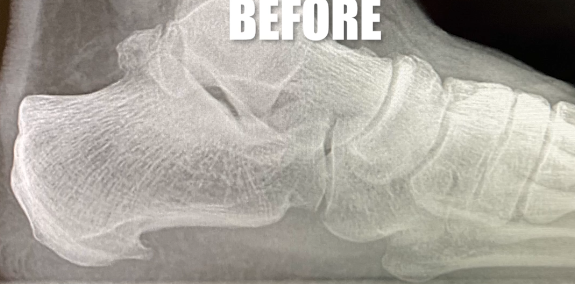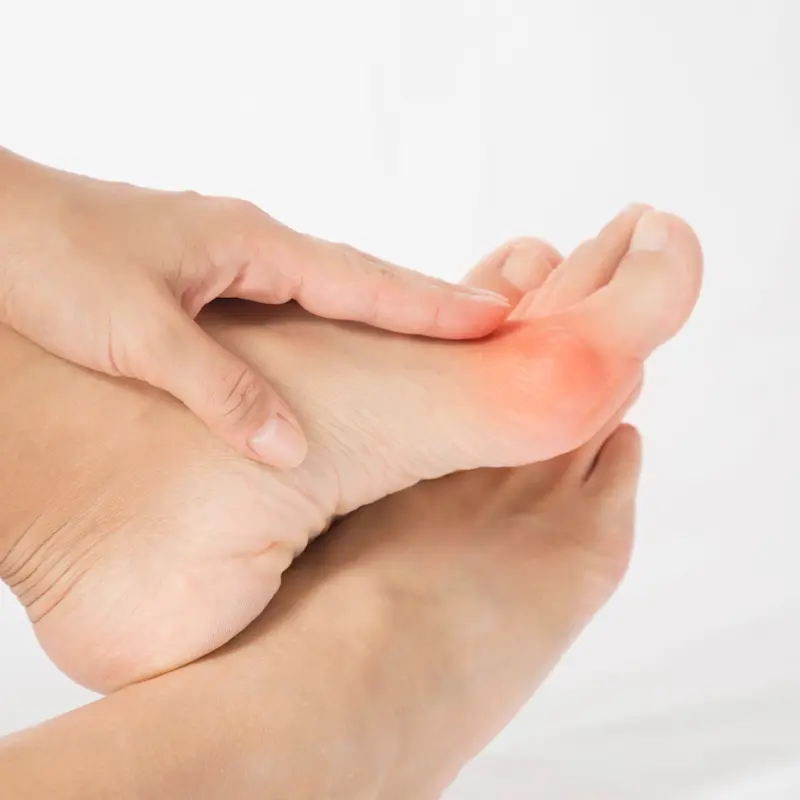
What is Heel Pain?
Heel pain is a common foot condition experienced by many people at some point in their lives. It typically occurs under the heel or just behind it, where the Achilles tendon connects to the heel bone. Although heel pain can be severe and sometimes disabling, it is rarely a health threat and can often be treated effectively with non-surgical methods.
What are the symptoms of heel pain?
The primary symptom of heel pain is, obviously, pain in the heel, which can range from mild to severe. Other symptoms might include:
- Pain on the bottom of the heel, especially when standing up after resting.
- Pain that worsens when waking up in the morning or after sitting for prolonged periods.
- Swelling and redness in the heel.
- Increased pain after exercise or activity, not during it.
Case Study: Heel Spur
This patient experienced heel pain for an extended period and has been on their feet for 20-30 years. Despite trying custom orthotics, the pain persisted, leading to surgery. The surgery was successful in addressing the underlying issue (a heel spur) and alleviating the pain. The patient experienced a quick recovery with no need for a cast or crutches. They are now pain-free and able to return to work.
Heel Pain FAQ
For a proper diagnosis and recommended treatment plan,
we suggest you consult with a podiatrist for professional help and care.

















